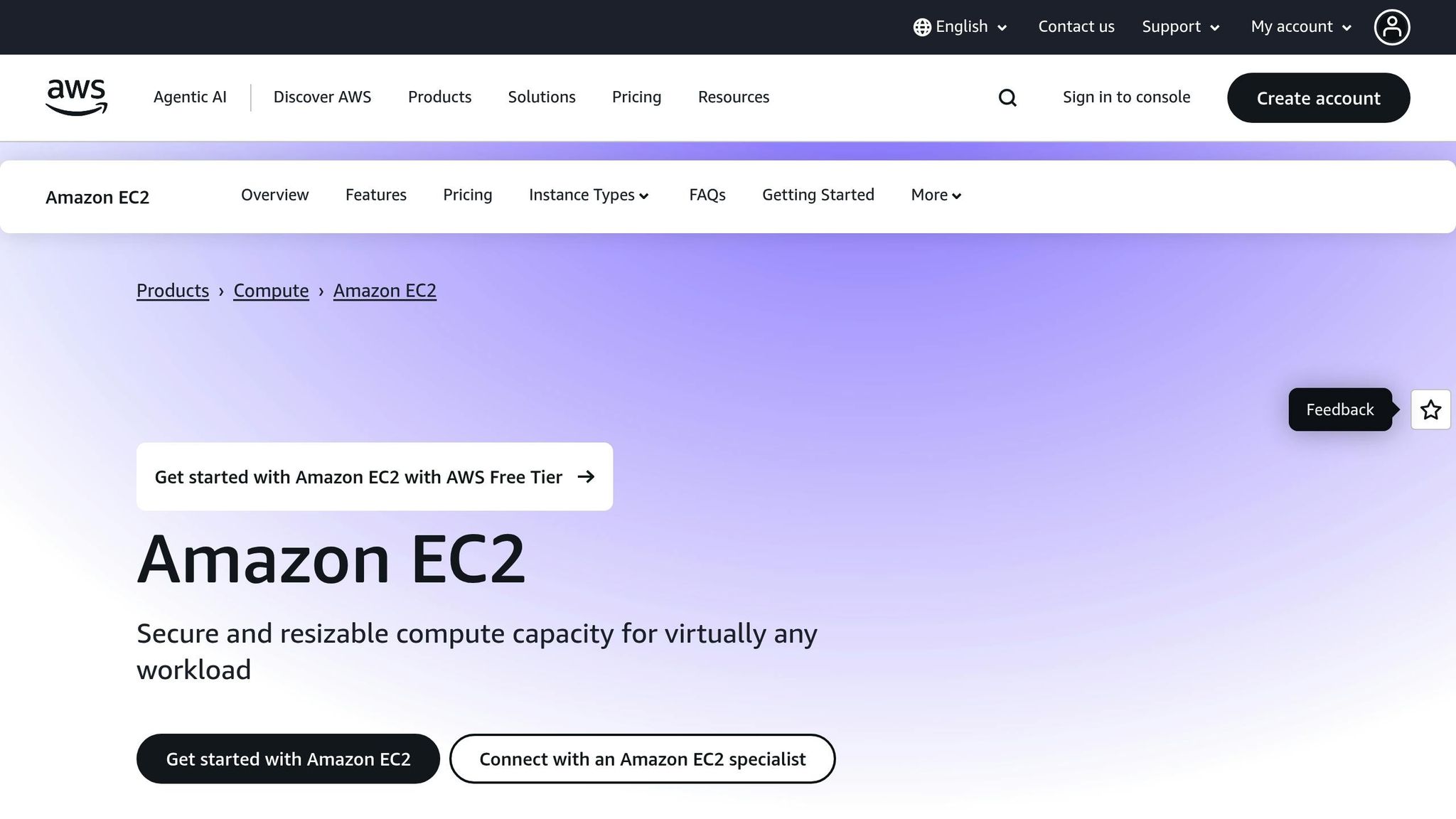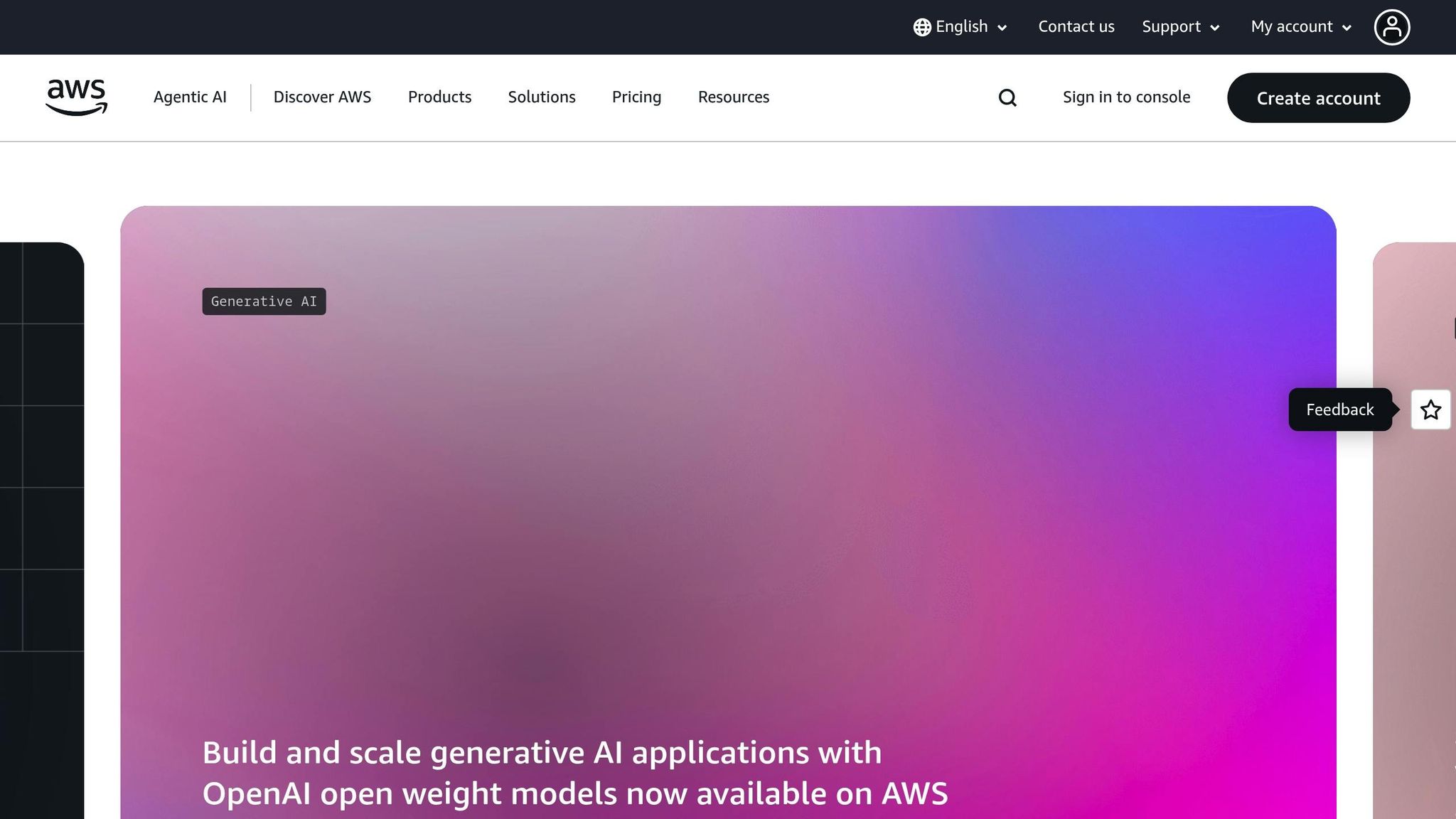AWS Reserved Instances (RIs) are a cost-saving option for businesses using AWS services like EC2 and RDS. By committing to one- or three-year terms, you can save 30% to 75% compared to on-demand pricing. These are ideal for workloads with consistent usage patterns, such as web servers or databases.
There are three types of RIs:
- Standard RIs: Offer the highest savings but are fixed in configuration.
- Convertible RIs: Provide flexibility to switch instance types or families, with slightly lower discounts.
- Scheduled RIs: Reserve capacity for specific time windows, perfect for recurring tasks like batch processing or reporting.
RIs simplify budgeting, help with capacity planning, and work well with other AWS cost-saving tools like Savings Plans. Choosing the right RI type depends on your workloads and how predictable or dynamic they are. Combining RI types can maximise savings and scalability.
✋STANDARD, CONVERTIBLE, REGIONAL, ZONAL Reservation | A Comparison of EC2 Reserved Instances

Types of AWS Reserved Instances

AWS provides three types of Reserved Instances, each designed to address different workload needs. Knowing these options can help you make an informed choice based on your specific requirements.
Standard Reserved Instances
Standard Reserved Instances offer the highest cost savings, with discounts of up to 75% off on-demand pricing [2][3]. However, this comes with limited flexibility once purchased.
When you buy a Standard RI, the configuration is locked for the duration of the term. For instance, if you purchase a Standard RI for a t3.medium instance running Linux in the eu-west-2 region, you cannot later switch to a different instance type or operating system [2][3]. This makes them ideal for workloads with consistent and predictable usage patterns over one or three years.
These instances are well-suited for always-on
applications, such as web servers with steady traffic, database servers that support essential business functions, or backend services that run continuously.
That said, there is some flexibility if you opt for Regional Standard RIs. These allow you to modify instance sizes within the same family and region. For example, you could adjust from t3.medium to t3.large as long as both belong to the same instance family [1].
While Standard RIs are a great choice for steady workloads, they may not be ideal for scenarios requiring frequent adjustments.
Convertible Reserved Instances
If your application needs might change over time, Convertible Reserved Instances offer more adaptability. While their discounts are slightly lower - ranging from 54% to 66% off on-demand rates [1][2][3] - their flexibility can be a game-changer for evolving business needs.
The standout feature of Convertible RIs is the ability to exchange them for different configurations during the reservation period. This includes changes to instance families, operating systems, tenancies, instance sizes, availability zones, and networking types [2][3]. For example, if your workload shifts from compute-optimised to memory-optimised instances, you can exchange a c5.large Convertible RI for an r5.large without losing the remaining term.
However, exchanges must be for RIs of equal or greater value, and they need to be performed manually via the AWS console [3].
Convertible RIs are ideal for businesses with dynamic environments, such as those experiencing growth, seasonal demand changes, or technological upgrades. They strike a balance between cost savings and the flexibility to adapt as requirements evolve.
Scheduled Reserved Instances
Scheduled Reserved Instances are tailored for workloads that operate at specific, predictable intervals. Unlike Standard and Convertible RIs, which provide continuous capacity, Scheduled RIs reserve capacity for set time windows [4][2].
These reservations can range from a few hours each day to specific days of the month, making them perfect for batch processing, reporting, or other periodic tasks [4]. For example, if you run a data processing job every Sunday from 2:00 AM to 8:00 AM, a Scheduled RI ensures you have the required capacity at a reduced cost, without paying for unused time during the rest of the week [4].
Scheduled RIs provide the same discount levels as Standard RIs [4], offering significant savings for workloads that don’t require constant availability. Their predictability also simplifies capacity planning, ensuring resources are available exactly when needed.
By combining these options, AWS enables tailored cost and capacity management for a wide range of workload patterns.
| Reserved Instance Type | Discount Range | Flexibility Level | Best For |
|---|---|---|---|
| Standard | Up to 75% [2][3] | Low (fixed parameters) | Predictable, steady workloads |
| Convertible | 54-66% [1][2][3] | High (exchangeable) | Dynamic, evolving workloads |
| Scheduled | Up to 75% [4] | Time-specific | Recurring, time-based tasks |
Use Cases for Scaling High-Performance Workloads
Each Reserved Instance (RI) type strikes a balance between cost efficiency and performance, tailored to specific scaling needs. Below, we explore how different RI types can optimise scaling in practical scenarios.
Standard RIs for Predictable Workloads
Standard Reserved Instances are ideal for environments with consistent capacity requirements. Their significant discounts make them a cost-effective choice for infrastructure that operates steadily without major fluctuations.
Take production database servers, for example. These systems typically require stable resource allocation, running around the clock to support operations. Whether it's a MySQL or PostgreSQL database powering an e-commerce platform, the demand for compute and memory resources remains steady, even during off-peak hours.
Similarly, web server clusters behind load balancers can greatly benefit. By analysing historical data, you can determine baseline capacity needs and use Standard RIs to cover this minimum. Additional on-demand instances can then handle any traffic surges, ensuring cost efficiency while maintaining scalability.
Another strong fit is backend API services that operate continuously. These services often exhibit consistent resource usage, making them perfect candidates for the discounts offered by Standard RIs.
For these scenarios, accurate capacity planning based on historical trends is crucial. This strategy works particularly well for well-established applications with predictable usage patterns, ensuring cost-effective scaling in cloud environments.
Convertible RIs for Dynamic Workloads
Convertible Reserved Instances are designed for situations where workloads evolve over time. Their flexibility to exchange reservations makes them a great choice for businesses that anticipate changing requirements, all while delivering considerable cost savings.
For instance, analytics and data processing workloads often grow or shift in focus. As data volumes increase or processing needs change, you might need to move from compute-optimised to memory-optimised instances. Convertible RIs allow you to adapt your reservations to these changes seamlessly.
Development and testing environments also benefit from this flexibility. As projects progress and new technologies are adopted, the ability to adjust instance configurations becomes invaluable.
Seasonal businesses, such as retailers, can use Convertible RIs to adapt to varying demand. During quieter periods, smaller instances might suffice, but as peak seasons approach, these can be exchanged for larger configurations to handle the increased load efficiently.
For growing startups, Convertible RIs provide a way to scale without being locked into static configurations. As their infrastructure needs evolve rapidly, the exchange capability ensures they can keep up with growth while still enjoying RI discounts.
The exchange process requires reservations of equal or greater value, ensuring businesses can scale effectively while maintaining cost efficiency.
Scheduled RIs for Time-Sensitive Tasks
Scheduled Reserved Instances are perfect for workloads with predictable timing patterns, offering discounts similar to Standard RIs but tailored to specific time windows. This makes them a smart choice for high-performance tasks that only need capacity at set intervals.
For example, nightly batch processing jobs in financial institutions often require heavy computing power for a few hours each night. Scheduled RIs let these organisations reserve capacity just for those hours, avoiding unnecessary costs during the day.
Similarly, weekly reporting and analytics tasks can benefit. Many businesses perform data analysis over weekends when operational loads are lighter. Scheduled RIs reserved for Saturday and Sunday processing can significantly cut costs compared to on-demand pricing.
Monthly data archival processes are another excellent fit. Tasks like moving large datasets between storage tiers or performing extensive backups often require dedicated capacity for a few days each month, making Scheduled RIs a cost-effective option.
Finally, regulatory compliance reporting, such as monthly risk calculations in financial services or periodic compliance checks in healthcare, often follows strict schedules. Scheduled RIs ensure the necessary capacity is available without overspending.
The key to maximising Scheduled RIs lies in accurate timing predictions. If your workload has variable timing or might exceed the reserved windows, Scheduled RIs may not be suitable. However, for workloads with consistent, predictable schedules, they provide an excellent way to balance performance and cost efficiency, especially for periodic high-demand tasks.
Need help optimizing your cloud costs?
Get expert advice on how to reduce your cloud expenses without sacrificing performance.
Best Practices for Cost-Efficient Scaling with Reserved Instances
To get the most out of Reserved Instances (RIs), align your purchases with actual usage patterns and make adjustments as needed. Let’s explore some practical ways to optimise your scaling strategy.
Analysing Historical Usage
Start by digging into historical usage data with tools like AWS CloudWatch and Cost Explorer. These tools help you identify consistent workloads and predict future demand. For example, look at whether your applications run continuously or are mainly active during business hours. By understanding these patterns, you can fine-tune your RI purchases to match both current needs and future projections.
Combining RIs with Savings Plans
Pairing Reserved Instances with AWS Savings Plans can help you manage costs effectively. RIs are ideal for predictable, steady workloads, while Savings Plans offer flexibility for variable or unexpected usage. Together, they allow you to secure a cost-efficient baseline and adapt to changing demands. This combination ensures your cloud spending remains balanced and responsive to diverse workload requirements.
Monitoring and Managing RIs
Ongoing monitoring is key to maintaining cost efficiency. Use tools like AWS Trusted Advisor and dashboards to track RI utilisation and spot underused reservations. Make this review process a regular part of your cloud management routine. Set up automated alerts for changes in usage or upcoming expirations so you can adjust reservations as needed. For deeper insights and tailored advice, consider consulting experts like Hokstad Consulting to refine your strategy further.
Integrating Reserved Instances into Cloud Cost Optimisation
Incorporating Reserved Instances (RIs) into your cloud cost strategy involves aligning them with your organisation's financial objectives and operational needs. By doing so, you can develop targeted approaches that improve scaling efficiency and long-term cost management.
Aligning RI Purchases with Business Goals
Your RI purchasing decisions should reflect your company's growth plans and scaling objectives. For example, if your organisation anticipates a 40% growth in operations over the next two years, your RI strategy should accommodate this expansion rather than focusing solely on current usage. This forward-thinking approach ensures your infrastructure evolves in step with your business.
It's also essential to link RI commitments to specific business outcomes. For instance, if you're launching a new product line requiring steady compute capacity, Standard RIs can secure lower rates for the foundational infrastructure. On the other hand, Convertible RIs are ideal for workloads with variable requirements, offering the flexibility to adapt as market demands shift.
Leveraging Automation and Expert Guidance
Managing RIs effectively isn't just about technical know-how; it also requires ongoing oversight and strategic planning. While automation tools can handle routine tasks like monitoring utilisation or identifying underused reservations, complex decisions benefit from human expertise.
Automation simplifies operational tasks like applying RIs to matching instances, ensuring your investment is fully utilised. However, determining the right mix of Standard and Convertible RIs or deciding when to modify existing reservations requires a more nuanced approach.
This is where consulting expertise becomes invaluable. For example, Hokstad Consulting offers tailored cloud cost engineering services, helping businesses cut cloud expenses by 30-50% through strategic RI planning and other optimisation techniques. Their thorough cloud audits pinpoint RI opportunities and areas of overspending, ensuring your RI strategy supports overall cost-saving initiatives rather than creating isolated efficiencies.
By combining automation with expert insights, you can streamline RI management and address the complexities of hybrid setups.
Optimising for Hybrid Cloud Environments
Hybrid environments, while more complex, present unique opportunities for cost savings. If your workloads span AWS, private cloud infrastructure, and managed hosting, your RI strategy must account for how these platforms interact.
Hokstad Consulting's expertise in hybrid cloud environments can help you balance RIs with private cloud investments and managed hosting setups. For instance, you might use RIs for AWS-based development while keeping production workloads on private infrastructure to meet compliance requirements.
A key consideration in hybrid setups is avoiding vendor lock-in. Convertible RIs, with their flexibility, are often better suited for hybrid environments, allowing you to shift workloads between platforms as business needs evolve - even if the immediate cost savings are slightly lower than those offered by Standard RIs.
Their No Savings, No Fee
pricing model ensures consulting costs are tied directly to measurable results, making it easier to justify professional RI optimisation services.
In hybrid environments, regular reviews are crucial. Usage patterns often shift across platforms due to changes in performance needs, compliance requirements, or cost factors. Expert guidance ensures your RI strategy remains adaptable, supporting your infrastructure's flexibility rather than restricting it.
Conclusion
Selecting the right Reserved Instance (RI) type depends on your workload patterns and how much flexibility you need. Standard RIs are ideal for steady, predictable workloads, offering the highest cost savings. On the other hand, Convertible RIs are better suited for environments where requirements may change, thanks to their adaptability. For scenarios with predictable time-based usage, Scheduled RIs can be a good fit, though they’re less commonly used.
The key to making the most of RIs is balancing cost efficiency with flexibility. Many organisations find success by combining RI types - for example, using Standard RIs to cover consistent baseline needs and Convertible RIs to handle growth or uncertain workloads. This approach ensures you’re well-prepared for the challenges of managing RIs over time.
Managing RIs effectively requires ongoing analysis, thoughtful planning, and the ability to adapt. This becomes even more crucial in hybrid environments, where multi-platform workloads add additional layers of complexity.
Expert cloud cost management can significantly enhance the value of your RIs. For instance, Hokstad Consulting has helped clients reduce cloud expenses by 30–50% through a mix of strategic RI planning and other cost-saving techniques.
The most effective RI strategies are part of a larger effort to optimise cloud costs. Aligning RI commitments with business goals, automating routine tasks, and seeking expert advice for strategic decisions can lead to both immediate savings and long-term efficiency.
Whether you’re scaling a startup or fine-tuning enterprise infrastructure, combining the right mix of RI types with expert insights allows your cloud costs to grow intelligently alongside your business.
FAQs
What are the differences between AWS Reserved Instances and Savings Plans in terms of cost savings and flexibility?
When it comes to cutting AWS costs, Reserved Instances (RIs) and Savings Plans are two popular options, each with its own advantages.
Reserved Instances can slash costs by up to 75% if you commit to specific instance types and regions for a fixed term, such as 1 or 3 years. The catch? They're less flexible - once you've locked in, you can't easily change attributes like the instance type or region.
Savings Plans, on the other hand, offer savings of up to 66% while giving you much more flexibility. These plans allow discounts to be applied across different instance types, regions, and even other AWS services. This makes them a great fit for businesses with workloads that fluctuate or evolve over time.
To choose between the two, think about how predictable your workloads are. For consistent, steady usage, RIs can deliver higher savings. But if your needs tend to shift, Savings Plans often make more sense.
Can Scheduled Reserved Instances handle workloads that don’t follow a regular schedule?
Yes, Scheduled Reserved Instances are a great fit for workloads that operate during specific, predefined time periods rather than running non-stop. They're particularly handy for jobs that happen at predictable intervals, like monthly financial reports or seasonal data processing.
By locking in capacity for these time windows, you can manage costs effectively while guaranteeing the resources are ready exactly when you need them.
How do I choose between Standard and Convertible Reserved Instances for my business?
When deciding between Standard Reserved Instances (RIs) and Convertible Reserved Instances (RIs), the choice often comes down to weighing cost savings against the need for adaptability.
- Standard RIs are ideal if your workloads are predictable and unlikely to change. They offer the largest discounts, making them a cost-effective option for stable, consistent usage. However, once purchased, they cannot be altered.
- Convertible RIs, on the other hand, are more adaptable. They allow you to adjust instance types within the same instance family as your needs change. While the discounts are slightly smaller compared to Standard RIs, they’re a better option for businesses with evolving or uncertain requirements.
To choose the best option, think about how stable your workloads are, how your needs might grow or shift over time, and what your budget allows. Seeking advice from experts can also help fine-tune your cloud strategy.
